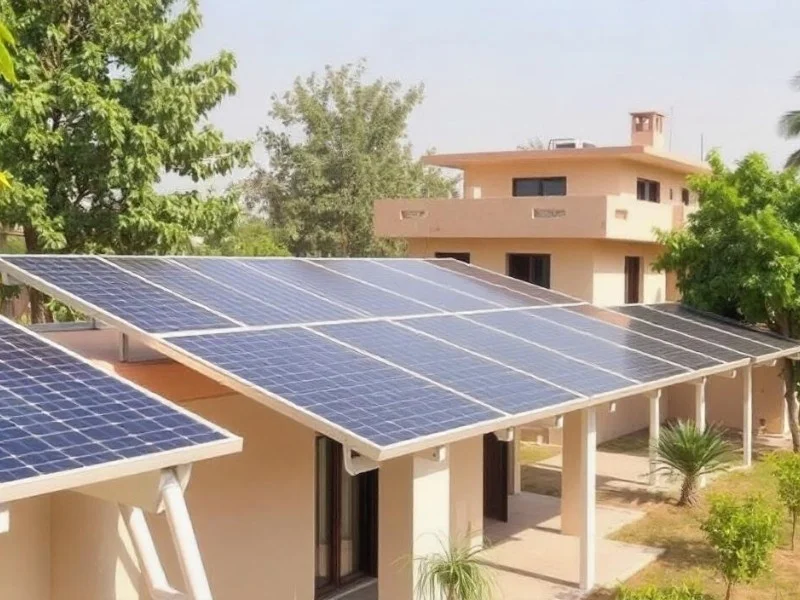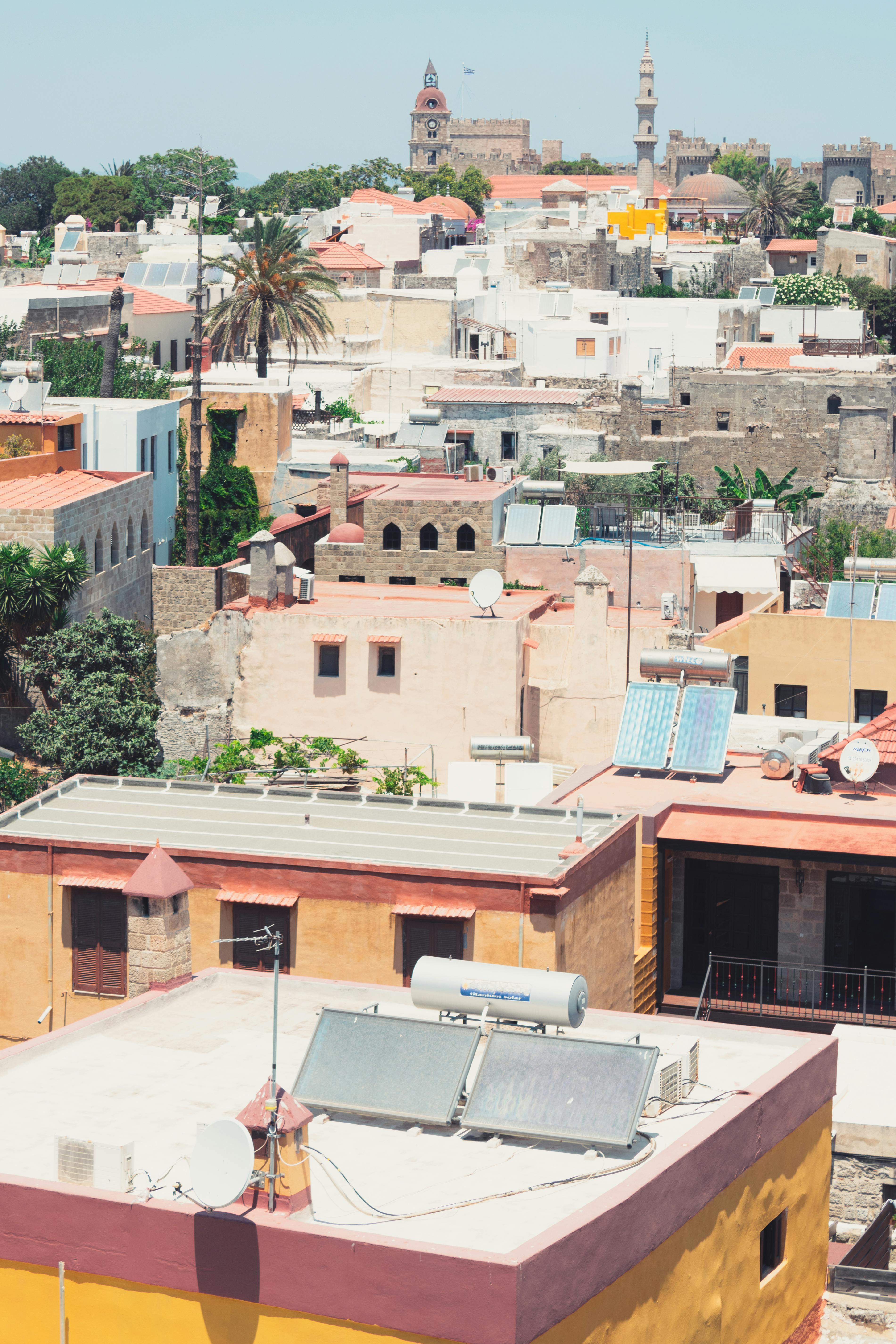Introduction and context
Scorching summers and chilly winters, the citizens of Uttar Pradesh experience it all. With air conditioners keeping the house cool and heaters warming up, it’s no wonder the energy bills can skyrocket. That's why installing a rooftop solar plant isa smart and friendly option for homeowners in the state.
If you are living in UP, you can take advantage of subsidies from both the central and state governments, making it even more affordable! Let’s dive into how you can set up a rooftop solar plant and enjoy the benefits of clean energy while proving to be a lifelong green investment. It's a win-win for your home and the environment!
Subsidy details
The Government of India approved the PM Surya Ghar: Muft Bijli Yojana on 29th February 2024 to increase the share of solar rooftop capacity and empower residential households to generate their own electricity. The scheme has an outlay of Rs 75,021 crore and is to be implemented till FY 2026-27. This scheme will provide subsidy to install rooftop solar for residential and housing societies.
Subsidy will be applicable as below:
- Rs. 30,000/- per kW up to 2 kW
- Rs. 18,000/- per kW for additional capacity up to 3 kW
- Total Subsidy for systems larger than 3 kW capped at Rs 78,000
Also, in 2022 the UP government launched an ambitious solar policy named “Uttar Pradesh Solar Energy Policy-2022” to accelerate the deployment of solar power by means of implementation of utility-scale solar parks and projects, distributed Solar systems, establishment of ultra-mega solar parks and also residential rooftop solar PV projects. The policy will be operational for a period 5 year still 2027. The Policy aims to achieve a target of 22,000 MW Solar Power Projects up to 2026-27 in the State with 4,500 MW of capacity from rooftop solar projects.
As part of this solar policy, the UP government offers a solar subsidy in addition to the Central Financial Assistance (CFA) i.e. the PM-Surya Ghar: Muft Bijli Yojana. The Uttar Pradesh New and Renewable Energy Development Agency (UPNEDA) will act as a nodal agency for implementing it.
UPNEDA provides a subsidy of ₹15,000/kW with a maximum limit of ₹30,000/– per consumer. The money is reimbursed after the successful installation of the solar plant. Apart from this, residential consumers and RWAs can also claim Central Financial Assistance (CFA) directly from the national portal.
As per MNRE benchmark cost, A 1 kW Grid connected rooftop can cost ~INR 50,000/kW for the first 2 kW and INR 45,000 for the additional kW. Also, the cost of the solar plant has to be paid upfront, and the subsidy will be disbursed within 30 days of the issuance of the Joint commission report from the DISCOM. If upfront cost is an issue, financing options/solar loans can also be availed.
Let us see, the overall benefits from Subsidies:
Eligibility
- Indian citizenship
- Own a house with a roof suitable for installing solar panels
- Valid electricity connection.
- Has Not availed solar subsidy before.
- The solar system installation must be done through a certified solar company.
- The solar system should be a On-Grid system.
Other Requirements
The rooftop solar systems from1 kWp up to 1000 kWp or in combination can be set up. The maximum peak capacity of the grid connected rooftop Solar PV system to be installed shall not exceed100 % of the sanctioned connected load/contract demand of the consumer.
Also, the capacity of Solar Rooftop shall not exceed 25 % of capacity of the distribution Transformer or any other Transformer from which power is fed to the consumer. For ex if sanctioned connected load of the building is 10 kW, then maximum Rooftop Solar PV Power Plant of 10 KW capacity can be installed provided the capacity of the distribution transformer to which the Solar Plant will be connected or from which power is fed to the consumer is at least 50 KV
For housing societies and residential welfare associations (RWAs)
- Society registration papers and proof of ownership.
- Identification and verification of the residing members.
- Address verification.
- Electricity bills of all flats.
- Architectural plans of the property.
- Installation agreements with the solar vendor(certified).
How to Apply
Step: 1
Register in the portal https://www.pmsuryaghar.gov.in/consumerLogin with the following:
- Select your State &Electricity Distribution Company
- Enter your Electricity Consumer Number, Mobile Number & Email
Step: 2
- Login with Consumer Number & Mobile Number and enter the OTP received on your mobile number.
- Apply for the Rooftop solar by entering your category as residential and then enter the capacity of the planned solar rooftop plant. You will also need to enter the coordinates (Latitude and Longitude) of your house. You can check your coordinates in following steps:
- Turn On Location on your mobile Phone while being in the house.
- Go to Google Maps.
- Long press on the blue dot (current location) visible on the screen
- Scroll down and you will find the house coordinates
- Upload your electricity bill in the next step.
- Enter your bank details and upload a cancelled cheque/Bank Passbook copy/Bank E-Statement/Group Bank Account.
- Ensure the name on the bank details and the electricity bill is same.
Step: 3
- If the rooftop solar plant is less than 10kW, then the feasibility is auto- approved.
- If the rooftop solar plant is >10kW, then the DISCOM will approve the feasibility within 15 days of registration.
- Once you get the feasibility approval, get the plant installed by any of the registered vendors in your DISCOM
- Choose a vendor from the empaneled vendor list on the website.
- Once the vendor is selected, the vendor can fill the project details in the portal.
Step: 4
- Once installation is completed submit the plant details and apply for net meter.
Step: 5
- Commissioning certificate will be generated from the portal, after installation of net meter and inspection by DISCOM.
Step: 6
- Once you get the commissioning report. Click on the redeem option in the portal. You will receive your subsidy in your bank account within 30 days.
Disbursement of subsidy
A consumer will need to pay the full cost of the system initially and both the subsidies will be credited to their bank account via Direct Benefit Transfer from the government.
Once you get the commissioning report. You will receive your central government subsidy in your bank account within 30 days of the issuance of Joint Commissioning Report.
After Disbursal of Central Financial Assistance (CFA) through National Portal, UPNEDA releases the state subsidy to all the eligible consumers.
Timeline for Net Metering and Subsidy Disbursal
Financing Support
Also, if upfront investment is a barrier towards your solar journey, loans, and financing solutions can also be availed through companies like Aerem.
At Aerem, you can apply for loan through the Aerem app which offers loans
- Up to 90% of project cost
- 5-year tenure and collateral free
- Attractive Interest Rates
- Disbursement within 12 hours
Loan tracking on the Aerem App
The entire process is digital through the Aerem app providing a hassle-free loan application. Aerem is also the only RBI-licensed solar-focused NBFC in India making business with Aerem absolutely trustworthy, reliable, and dependable. Also, with the Aerem app you can track the progress of the solar installation digitally.
Financing your rooftop solar plant can reduce the burden of upfront cost and you can start saving immediately with the installation of the plant. Since the loans are collateral free and the loan is disbursed within hours, it makes adoption of solar rooftop very easy.
Savings expected
Conclusion
With the Solar Rooftop National Rooftop portal, it has become easier than ever to claim subsidy which is a direct transfer (DBT-Direct beneficiary Transfer) to the consumer’s bank account.
Also, as the UP-state subsidy can be claimed in addition to central subsidy, installing solar is a very attractive investment considering the rising electricity and temperatures while making the planet greener.

.webp)
.webp)
.webp)


.jpg)







.jpg)





.jpeg)











.jpg)


.png)
.png)
.png)
.png)
.png)
.png)


.png)


.jpg)
